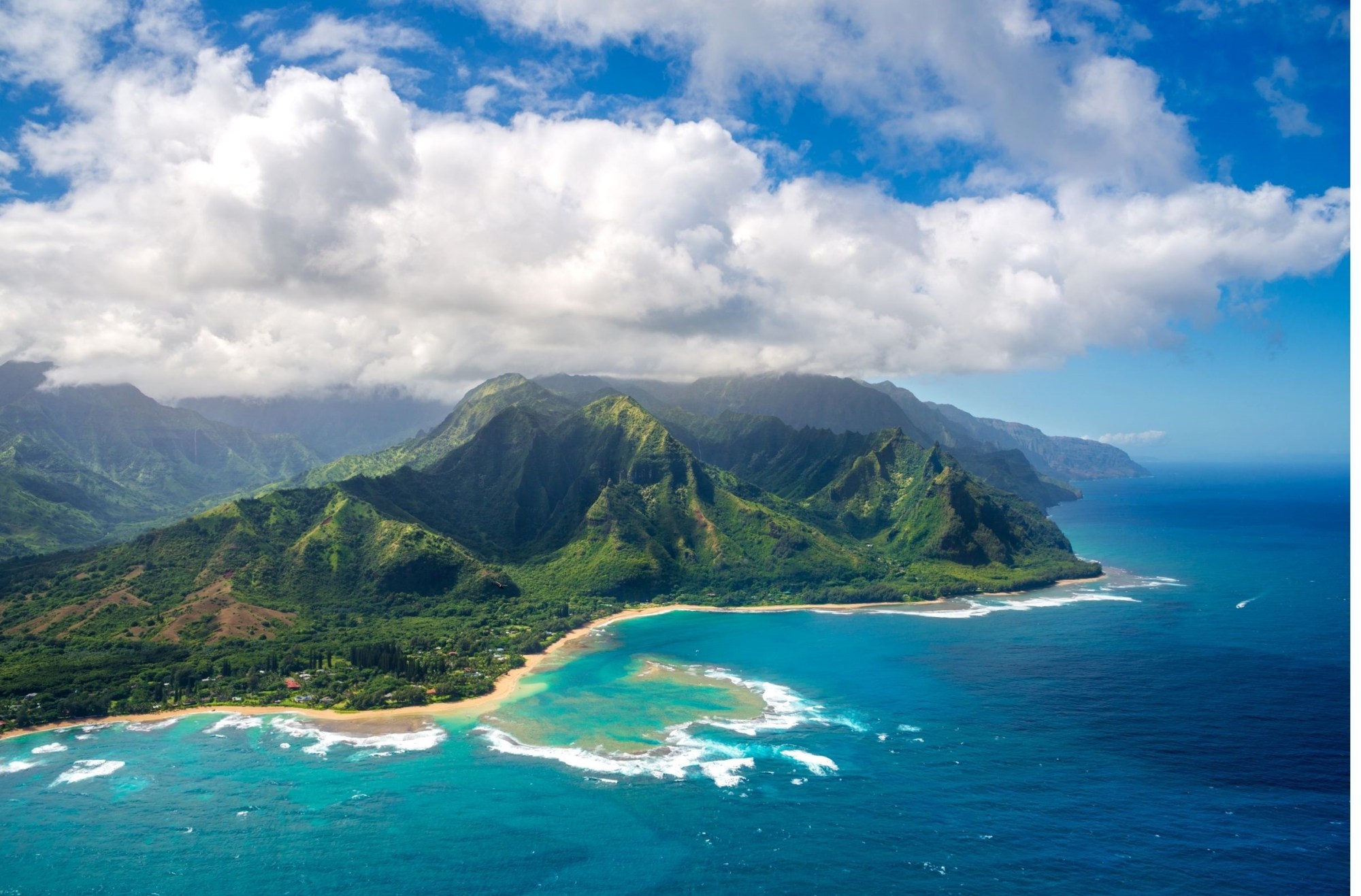The Iconic Nāpali Coast of Kauai

The Nāpali Coast on Kauai is one of the hidden gems of the Garden Island. Visitors can find this coast at the north west side of the island. Picture green cliffs rising more than 3/4 of a mile up from the sapphire sea. You’ll see deep shadows contrasted with well lit rocky cliffs, and you’ll wonder at the creative power of volcanic activity and erosion to shape the land.
There are several ways to explore this fantastic destination. Let’s discuss a few of them, and learn about this special location.
Nāpali Coast by Helicopter
Unlike other Hawaiian islands, Kauai does not have a highway that circles the island. This is because there are parts of the coast that are remote and rocky enough that they do not present suitable conditions for a roadway.
That’s why a helicopter ride can be the best way to see the Nāpali Coast. Visitors will get to see the sharp emerald cliff sides contrasting with the sapphire ocean horizon. You may even catch a glimpse of a waterfall pouring down the mountainside.
Hiking the Coast
Some travelers may prefer a more up close and personal visit to Nāpali Coast. To access a hiking trail across the coast, begin your hike in Haena State Park at the end of highway 56. This trail becomes more rugged as you go along, so be prepared and seek out proper permits if you plan to spend the night. This hike is the best way to view Hanakapiai Falls.
Nāpali Coast by Sea
Another spectacular way to enjoy the coast is to take a kayak and boat to shore. Kayaking is permitted during the summer, as waves are more calm during this time of the year. Boaters can come ashore at two beaches, and camping is also allowed with a proper permit.
It’s important to always select an approved vendor for your visit. Some beaches are not open to visitors, so be sure to check before you book your kayak trip.
History of the Coast
Kauai was created by flowing magma over 5 million years ago. Amazingly, this land was then seeded by birds whose droppings and feathers carried seeds to the island. Scientists also believe that detritus washed up on the shore was another source of plant life. As the years went on, the cliffs became a lush retreat.
Polynesian explorers on outrigger canoes found the coast using constellations to navigate. Estimates suggest they first arrived at 1200 A.D.
The Nāpali Coast’s high cliffs and deep crevices provided protection for the Polynesians and Tahitians who settled in the area. Boat based trade flourished.
Eventually, western influence brought disease and cultural damage, and the last residents of the area moved on during the beginning of the 1900s.
But the coast stands against erosion and time as a reminder of the earth’s power of creation.
